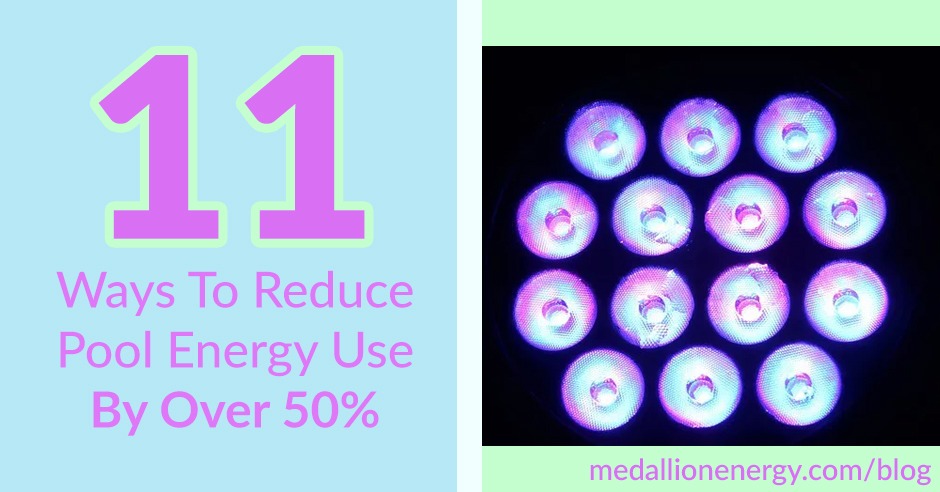If you’re looking for a few practical ways to reduce pool energy use, then keep reading.
Having your own swimming pool is the life. You can hop in the water and cool off whenever the mood takes you. And you can swim comfortably in the fresh, soothing water, at whichever temperature you desire. Year-round.
Of course, every pool owner knows that running a pool uses plenty of energy. From powering the pump, to running the heater.
But what you may not know is that there are proven ways to significantly reduce your pool’s energy use each month. We’re talking cutting it down by 50% or more. And the best part is, you can stop wasting energy, and start saving more right now.
Simply follow the tips below, and you can start enjoying more for less.
11 Ways To Reduce Pool Energy Use By Over 50%
1.) Size your swimming pool pump correctly
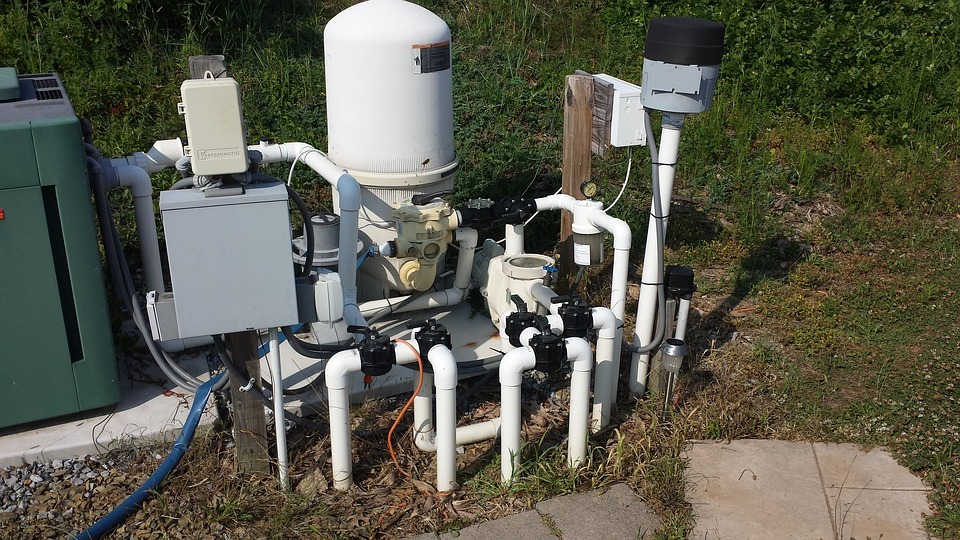


The rule of thumb is, the bigger the pool pump, the more energy it uses. Which is why sizing your pool pump correctly is so important.
You don’t want to use a pool pump that’s too small, because then you’ll have to overwork it constantly. And if it’s too big, you’ll be using way more energy to circulate water than your pool actually requires.
The easiest way to calculate pool pump size is by using the following equation:
Pool Volume in Gallons ÷ Turnover Rate in Minutes = Flow Rate
So if you have a 25,000-gallon pool, and want a turnover rate of 8 hours (which is how long it’ll take to clean all the water), the equation would look like this:
First, we multiply 8 hours by 60 to convert to 480 minutes. Then we plug it into the equation.
25,000 gallons ÷ 480 minutes = 52 GPM (gallons per minutes)
So for a pool this size, you’d need a pump with a flow rate greater than or equal to 52 GPM. In most cases, that would be either a 1 or 1.5 HP pool pump, with the stronger pump being the best choice.
How you save: The pump uses the exact amount of power needed for the size of your pool (doesn’t over, or undercompensate)
2.) Switch to a variable speed pool pump for the best energy efficiency
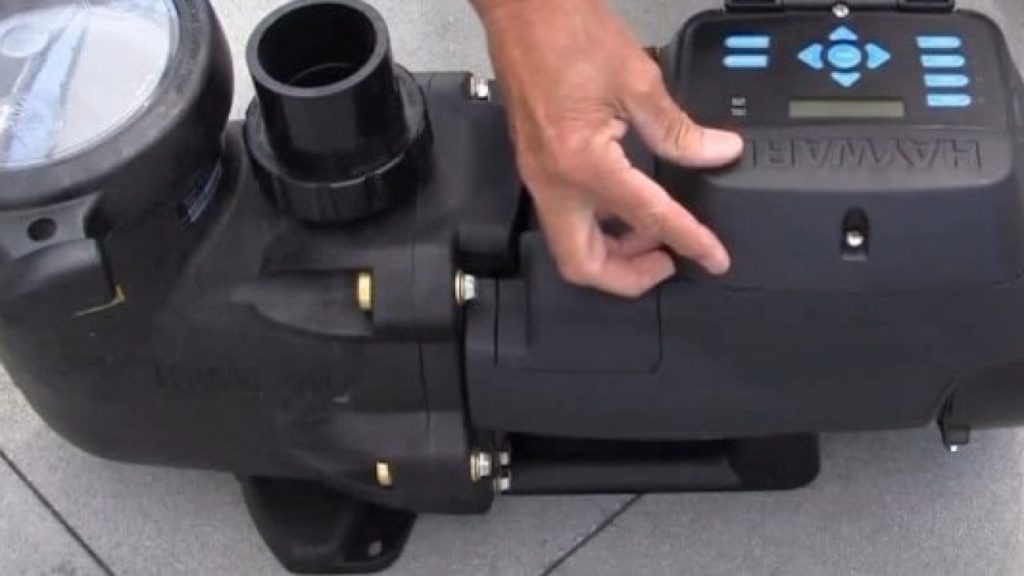


While choosing the right pool pump size is important, there’s something that has an even bigger effect on your pool’s energy use.
And that’s the speed of the pump. Or more so, your ability to control it.
There are three types of pool pumps: single speed, dual speed, and variable speed pool pumps.
With a single-speed pump, the equipment runs at a constant, fixed speed whenever you use it. It cant be lowered or increased.
Dual speed pumps offer a bit more freedom with both a slow and fast setting.
But for the most control over speed and energy use, a variable speed pump comes out as the winning choice. Most variable speed pumps offer at least 3 or more speed settings.
This feature allows you to set your pump to slowest rate possible when it’s not being used. So while your pool water circulates, the pull on electricity stays low. On the other hand, it’s also great for emergency situations, like clearing the water when you fix a cloudy pool.
How you save: Control over pump speed gives you control over energy use
3.) Size your pool heater correctly
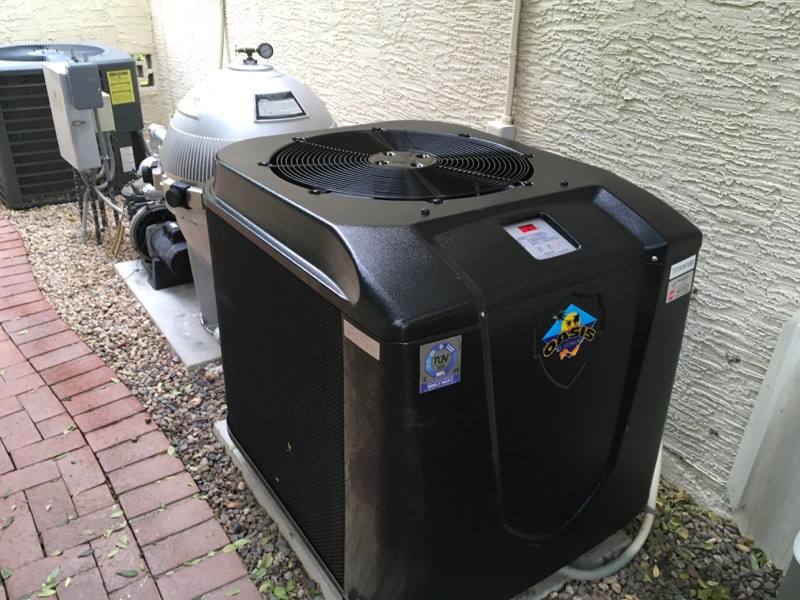


Just like an undersized pool pump, using a pool heater that’s too small for your pool can end up costing you way more each month.
An undersized pool heater might still work, but you’ll have to run it twice as much to get the same results you would with the correct size. Which means that at least half of your money is being wasted to keep your pool warm.
But when you size your pool heater the right way, you’ll know exactly how much heating power you need (measured in BTUs). Because just like pumps, pool heaters are sized according to your swimming pool.
Click here to use our free pool heat pump sizing calculator.
How you save: A properly sized pool heater warms up your swimming pool more efficiently than an undersized heater
4.) Lower your water temperature/turn down your heater (just a little)
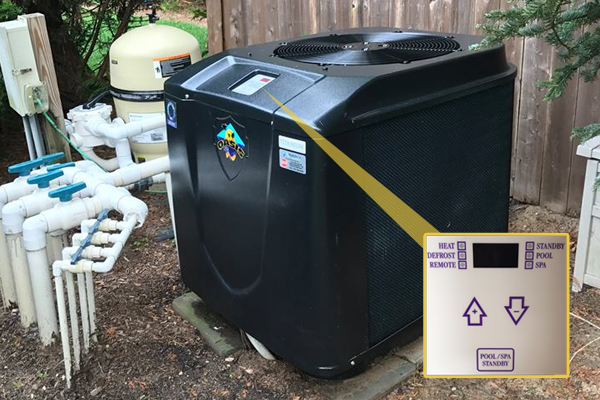


Running a pool heat pump is kind of like running an air conditioner. You set a temperature, and the machine does what’s necessary to reach it.
But just like an air conditioner, the greater the temperature adjustments, the more it’ll cost you. Just think about how big of a difference it makes on your energy bill when you run your house’s AC at 75 degrees all month vs 70. It’s usually at least 30% more to run it colder.
Your pool heater isn’t much different. For every degree you raise your pool’s temperatures, you’ll spend 10 to 30% more in heating.
So what’s the quickest way to reduce pool energy use when it comes to heating? By lowering the temperature of your pool.
By simply decreasing your pool heater’s temperature from 84 to 80, you could save an extra 20% – 50% on your monthly heating bill. So the lower you’re willing to go, the less energy you’ll use. But even then, there are still more ways to conserve and reduce pool energy use.
How you save: the cooler (closer to natural temperature) you keep your pool water, the less your pool heater needs to run
5.) Choose an energy-efficient swimming pool heater
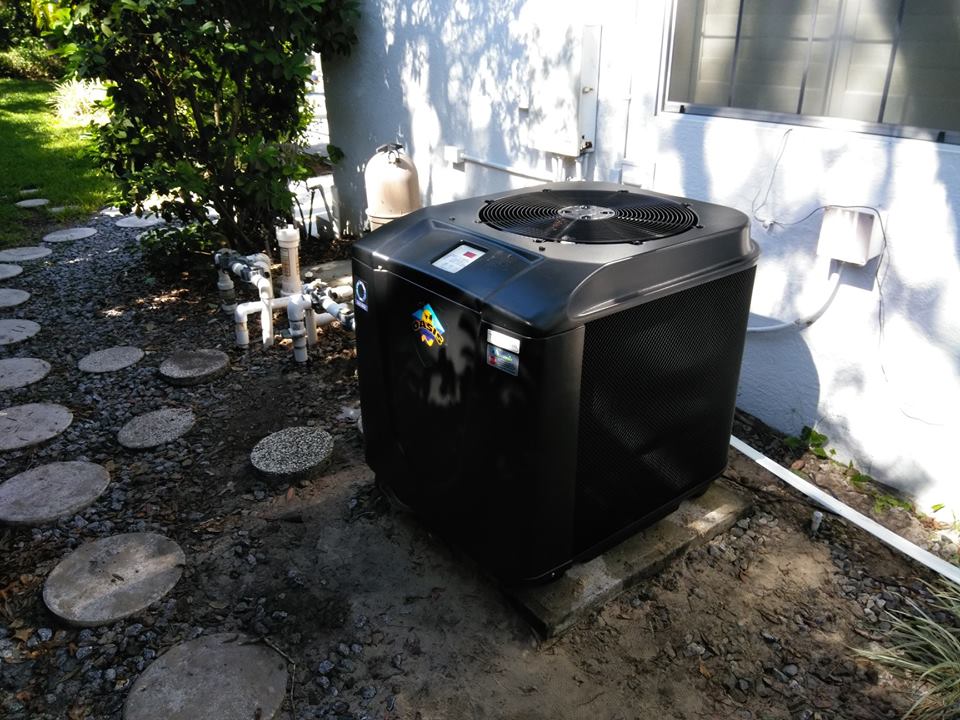


The type of pool heater you use has a HUGE impact on your monthly energy bill.
And for most pool owners, that choice comes down to three options:
- Gas pool heaters
- Pool heat pumps
- Solar pool heaters
While we could spend an entire post explaining the differences between pool heaters, we’ll keep it short and sweet for this one. Here’s what you need to know:
- Gas pool heaters are the fastest, but cost the most to run
- Pool heat pumps are the second fastest and cost about 70% less than gas each month(ex. $300 vs $75 )
- Solar pool heaters are slowest and reliant on the sun but offer the cheapest heating
With that information alone, it’s easy to see why pool heat pumps continue to be the most popular choice for pool heating just about everywhere. Of course, the type of pool heater you decide to use is entirely dependent on your needs.
Some pool owners use one, others use a combination. Bottom line is, by using an energy-efficient pool heater like a pool heat pump, you can heat your pool for much less each month.
How you save: by choosing heat pumps over gas, you get eco-friendly and cost-effective performance at a 1/3rd of the cost
Related: How To Choose The Best Pool Heat Pump For Your Pool
6.) Switch to an energy-efficient swimming pool cleaner
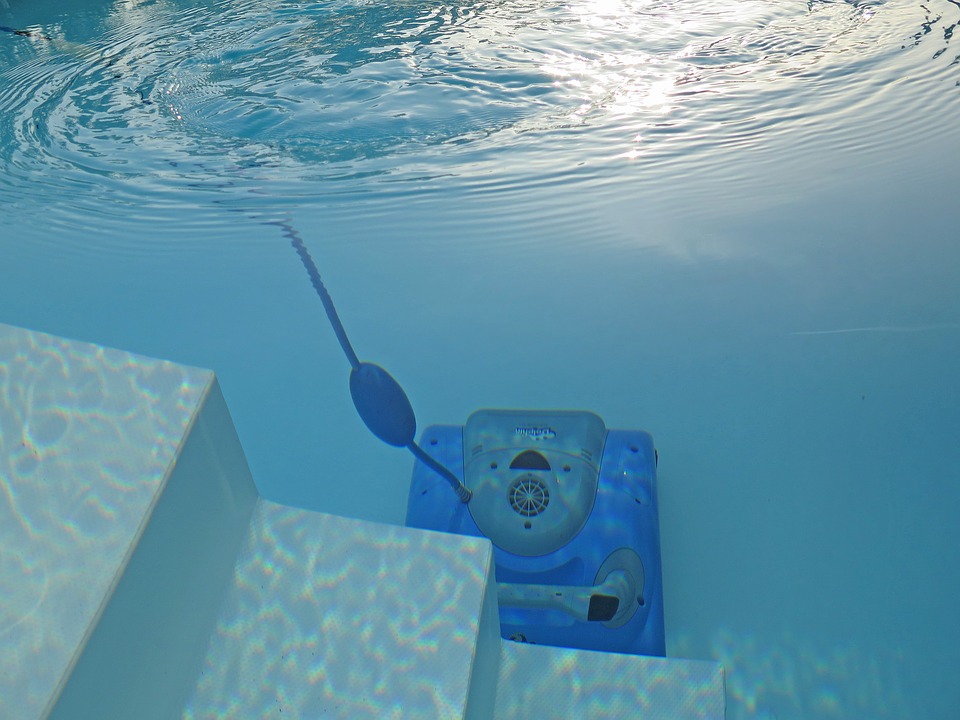


If you’re someone who doesn’t like to vacuum the pool, then an automatic pool cleaner is the perfect solution.
As the name implies, an automatic pool cleaner does the job of cleaning your pool for you. It vacuums the floor and walls and covers just about every surface.
But there’s more than one type of pool cleaner to choose from. And naturally, the one you choose affects your pool’s energy use.
There are three types of automatic pool cleaners: suction side, pressure side, and robotic cleaners
If you want to learn about the detailed differences between each one, check out this post: Automatic Pool Cleaners 101
Of all the pool cleaners, a robotic pool cleaner is by the far the most energy-efficient. It runs at less than half the cost of most suction and pressure side cleaners.
And they’re self-containing, so all you have to do is empty out the mesh bag when you’re done. No need to worry about clogging up your filter, or your energy meter.
How you save: Robotic cleaners use the least energy to vacuum your pool, which reduces pool energy use, keeps your filter clean, and prevents your pump from overworking
Related: How To Keep Your Pool Clean Like a Pro
7.) Upgrade to LED swimming pool lights (they cost WAY less each month)
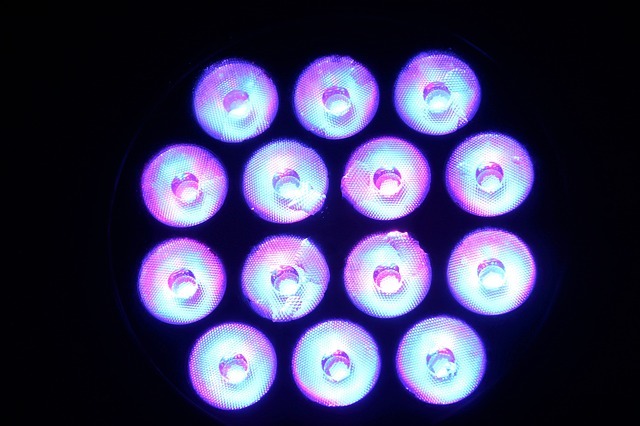


At this point, it’s no secret that LED lightbulbs save more energy than traditional incandescent bulbs. But just how much saving are we talking here?
Well, consider that 25,000 hours of light with a single incandescent bulb would cost about $180. The same amount of light with an LED bulb would only cost around $30. That’s 6x less energy use.
Even more impressive is the fact that a single LED bulb CAN actually last up to 25,000 hours before needing replacement. Which is shocking when compared to the average 5,000-hour lifespan of incandescent bulbs.
How you save: LED bulbs cost 6x less to run, and last 5x longer than incandescent bulbs. That’s A LOT less money wasted each month
8.) Use an automatic timer/use pool automation
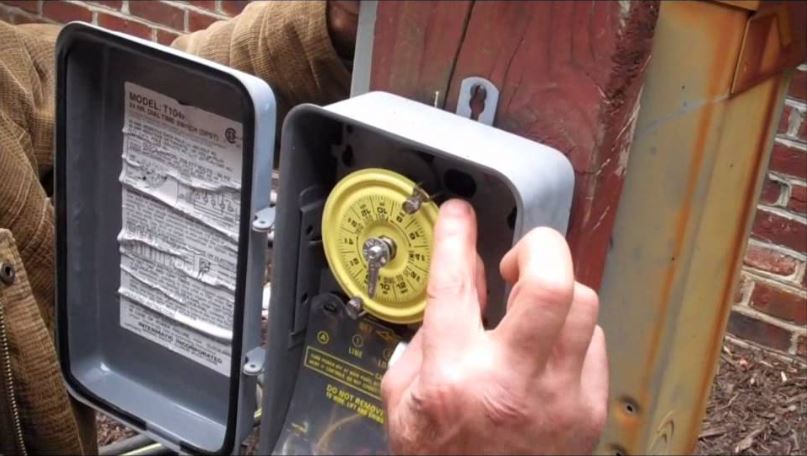


Everything from your pool pump to your pool heater can be set to run automatically with an automatic timer. And while that may not seem like a big deal, consider the following points:
- Running your pump on a consistent schedule keeps your water clean and your energy use consistent & predictable
- With an automatic timer, you never forget to run your pump or heater. Even when you’re away
- You can always run your pool equipment at the most effective times, day to day, without having to lift a finger
An automatic timer gives you control over all your pool equipment from a single panel. Which saves time, and makes pool automation a breeze.
How you save: using a timer keeps energy use stable, automates your equipment, and prevents overrunning
9.) Keep your pool filter clean and unclogged
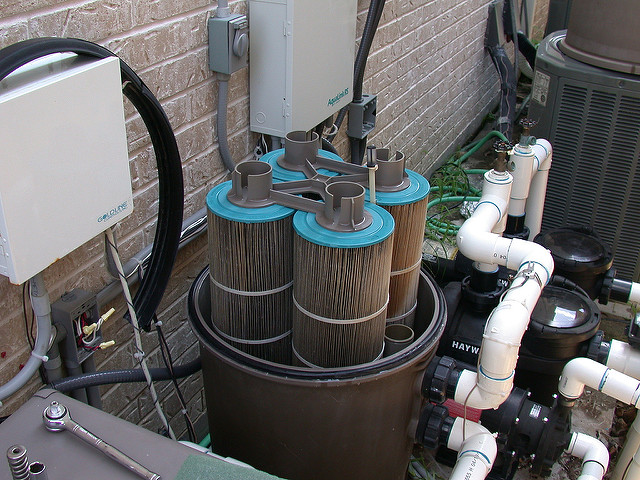


A clogged, dirty pool filter makes your pool pump work harder. It creates more resistance.
Therefore, the cleaner your pool filter stays, the less resistance it creates for your pool pump. Which prevents it from ever having to overwork itself.
So if you want to avoid wearing down your pool pump faster, and wasting electricity, remember to keep your filter and pump basket clean. Because the better your circulation, the lower your energy bill.
How you save: A clean pool filter reduces system pressure and keeps your pump working smoothly, which keeps energy use low
10.) Run your filter pump at night
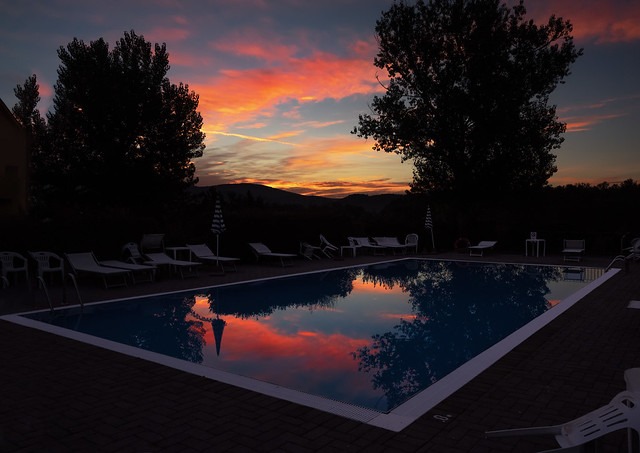


Is it better to run a pool pump at night or day?
Well, in the energy industry, there’s a time-frame during a 24 hour day known as non-peak hours. This is is when overall energy use is at it’s lowest for a particular area. It’s also when it’s cheapest.
In most areas, non-peak hours are during night time, when everyone is asleep.
So if you want to reduce your swimming pool’s energy use, you can run your pump during the night, when electricity is cheapest.
But you might also be wondering: should my pool pump run continuously?
As long as you run your pump at least 8 hours a day, that’s plenty. Of course, the more you run your pump, the more your water passes through the filter and circulates. For this reason, some pool owners choose to run their pool pump in increments. For example, 4 hours on, 2 hours off, then repeat.
How you save: during non-peak hours, energy use is cheaper
11.) Use a swimming pool solar cover
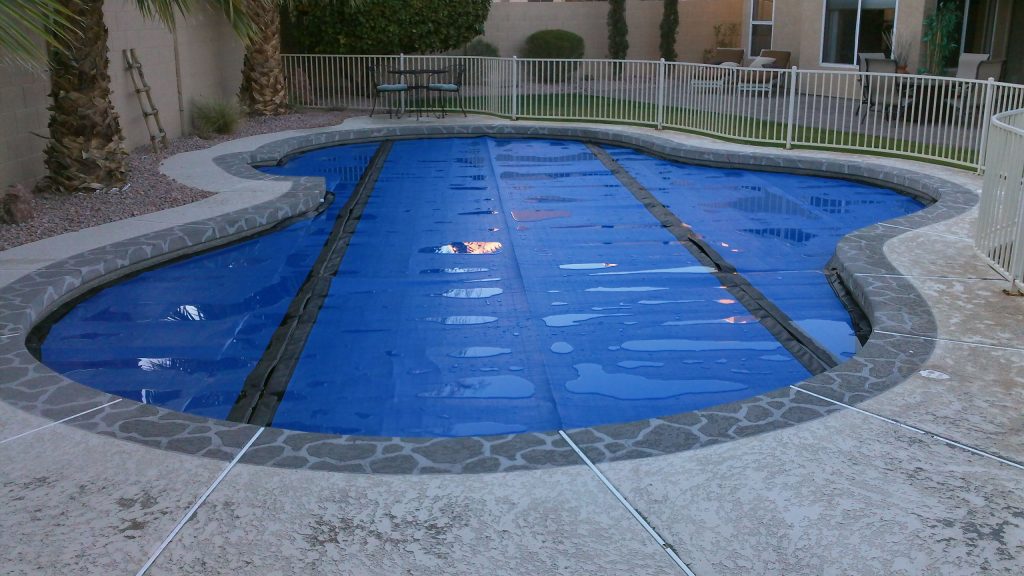


If you’re boiling a pot of water, what’s the fastest way to do it? With a lid, or without one?
With a lid, of course.
And once the water is boiling, if you want to retain the most water and heat, do you leave it covered or uncover it?
You’d leave it covered.
Your swimming pool follows VERY similar behavior when it comes to holding onto heat and water. Whenever your pool isn’t being used, keeping it covered can preserve the heat in the water. Which in turn also reduces how much you’ll need to run your heater.
How you save: covers help your pool retain 75% more heat and water. This reduces how much water and heat you have to replace, which lowers energy use
If you liked this post, you might also like:

